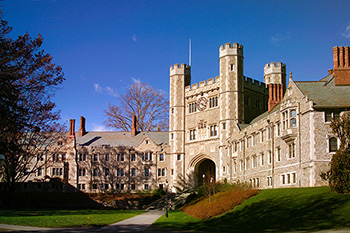
Log In


At elite colleges, more students come from the top 1 percent than the entire bottom 60 percent, according to a new study. While roughly one in four of the wealthiest students attend elite schools, including five Ivy League schools, graduating college helps "level the playing field for students of all socioeconomic backgrounds," according to Inside Higher Ed.
The Equality of Opportunity Project, based on millions of anonymous tax filings and tuition records from individuals in their 30s sheds light on the economic diversity (or lack thereof) of colleges' student bodies. The study reveals that the economic bottom 40 percent of students has "remained mostly flat for a decade" at elite colleges. While the Obama administration and Congress have extended Pell eligibility, "new estimates show that much of the increase in Pell recipients" does not necessarily mean there is more economic diversity at elite colleges.
Certain elite colleges that enroll the greatest percentage of low- and middle-income students, such as the University of California, Los Angeles, and Emory University, have lower-income students who "fare almost as well as rich students." According to the study, even though students from wealthier backgrounds are more likely to attend elite schools, both rich and poor students who attend the same college will eventually gain similar financial success. However, even if lower-income students do well at elite colleges, "less elite colleges may be more important engines of social mobility."
John Friedman, a co-author of the study, stated that "If you can get poor kids to a really good college, that's a good pathway to success" and that “other schools have outcomes nearly as good as Ivy League Schools, but [they] admit many, many more poor students."